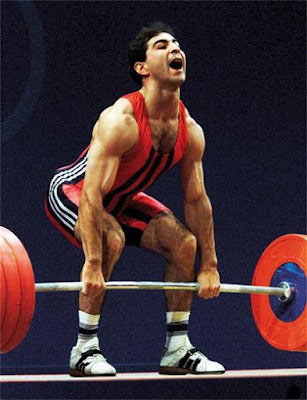Olympic Weightlifting for Beginners
Olympic Weightlifting Beginner's Guide: Step-by-Step Instruction for Building Strength and Technique
Intro,
The potential of Olympic weightlifting to build full-body power and athleticism has made it popular among fitness aficionados. Olympic weightlifting is a sport that combines strength, speed, and precision. If you are a novice who wants to start learning about Olympic weightlifting, this book will give you the necessary instructions and advice to get you started.
1. Recognise the Fundamentals
Spend some time learning the two main Olympic lifts, the snatch and the clean and jerk, before you hit the gym. While the clean and jerk requires lifting the barbell in two stages—first to the shoulders (clean) and then overhead (jerk)—the snatch requires lifting the barbell from the ground to overhead in a single, seamless action.
2. Seek Out Expert Guidance:
Investing in competent coaching is essential to mastering the complex methods of Olympic weightlifting. A qualified weightlifting coach can offer you individualised advice, help you improve safely, and correct your form. Find a weightlifting club or coach with a good reputation in your community.
3. Begin with the the basics:
Use lesser weights at first to concentrate on form and technique. To avoid injuries and lay a strong foundation for future development, it is essential to master the foundational motions. As you gain greater self-assurance in your skills, gradually raise the weight.
4. Pay attention to flexibility and mobility:
Olympic weightlifting necessitates a wide range of joint mobility. Focus on increasing your range of motion and suppleness by performing certain stretches. Your ankles, hips, and shoulders should receive extra attention because they are key locations for the lifts.
5. Build Your Core Power:
For stability and power creation during Olympic lifts, a strong core is necessary. To improve your general strength, incorporate exercises that strengthen the core, such as leg lifts, Russian twists, and planks, into your training regimen.
6. Use the Correct Breathing Methods:
In Olympic weightlifting, breathing technique is essential. To maximise your performance and preserve stability, become familiar with the proper times to breathe in and out during each lift phase.
7. Workout Frequently:
In weightlifting, consistency is essential. Schedule frequent training sessions with an emphasis on the clean and jerk as well as the snatch. You will make steady improvement with a well-planned training programme that progressively raises volume and intensity.
8. Keep Track of and Examine Your Lifts:
Make regular records of your lifts with a camera or your smartphone. You can find areas for improvement, monitor your progress, and make the required technique tweaks by watching over your recordings again.
9. Pay Attention to Your Body:
Olympic weightlifting can be physically taxing, so it's important to pay attention to your body's needs and give recovery top priority. Schedule rest days into your training, make sure you get enough sleep, and think about using foam rolling and stretching as extra forms of rehabilitation.
10. Make sensible objectives:
To stay motivated, set both short- and long-term objectives. Setting reasonable and attainable goals will help you stay focused on your development, whether it's raising your one-repetition maximum (1RM) or perfecting a particular technique.
In summary:
Starting Olympic weightlifting as a novice is a thrilling and fulfilling experience. You'll not only gain strength but also a fresh understanding of the dexterity and ability needed in this fast-paced activity if you prioritise good technique, get expert advice, and remain dedicated to your programme. Recall that the secrets to success in the pursuit of mastery over Olympic weightlifting are perseverance and determination.

Comments
Post a Comment